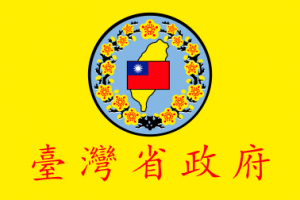Language/Min-nan-chinese/Grammar/Questions
Hi Min Nan Chinese learners! 😊
In this lesson, we will learn about questions in Min Nan Chinese. Questions are a fundamental part of any language as they help us to communicate with others and learn more about them. So, let's dive into the world of Min Nan Chinese questions!
Take a moment to explore these relevant pages as you conclude this lesson: Say Hello and Greetings in Min Nan Chinese, Plurals & Pronouns.
The Basics[edit | edit source]
In Min Nan Chinese, questions are formed by changing the tone of the last character of the sentence.
For example, consider the sentence:
"你好" (nǐ hǎo) which means "hello".
If we want to turn this into a question, we need to add a rising tone to the last character, making it sound like "nǐ hǎo?" (你好?). This would translate to "Are you doing well?" or "How are you?".
Let's look at another example:
"你喜欢吃什么" (nǐ xǐ huān chī shén me) which means "What food do you like?".
If we want to turn this into a question, we need to add a falling-rising tone to the last character, making it sound like "nǐ xǐ huān chī shén me?" (你喜歡吃什麼?). This would translate to "Do you like to eat what food?".
It's important to note that in Min Nan Chinese, there are no question words like "what, where, when, why, how" etc. Instead, we rely on context and tone to convey meaning in our questions. This might seem difficult at first, but with practice, it becomes easier.
The Three Types of Questions[edit | edit source]
There are three types of questions in Min Nan Chinese: yes-no questions, confirmation questions, and alternative questions. Let's look at each type in more detail.
Yes-No Questions[edit | edit source]
Yes-no questions are those that can be answered with a simple "yes" or "no". These questions are formed by adding the particle "bô" (否) to the end of a statement. This creates a negation, turning the statement into a question.
For example:
- Statement: "我是外國人" (Góa sī guá-kok-lâng) which means "I am a foreigner".
- Question: "我是外國人 bô?" (Góa sī guá-kok-lâng bô?) which means "Am I not a foreigner?".
Another example:
- Statement: "我想喝咖啡" (Góa siūnn tia̍h ka-fei) which means "I want to drink coffee".
- Question: "我想喝咖啡 bô?" (Góa siūnn tia̍h ka-fei bô?) which means "Don't I want to drink coffee?".
Confirmation Questions[edit | edit source]
Confirmation questions are those that seek affirmation or confirmation of a previously stated fact. These questions are formed by adding the particle "ó" (喔) to the end of a statement. This creates a confirmation tone, turning the statement into a question.
For example:
- Statement: "我是台灣人" (Góa sī Tâi-oân-lâng) which means "I am Taiwanese".
- Question: "我是台灣人 ó?" (Góa sī Tâi-oân-lâng ó?) which means "I am Taiwanese, right?".
Another example:
- Statement: "這是你的書" (chit sī lín-ê sîn) which means "This is your book".
- Question: "這是你的書 ó?" (chit sī lín-ê sîn ó?) which means "This is your book, isn't it?".
Alternative Questions[edit | edit source]
Alternative questions are those that present two or more options, one of which the listener is expected to choose. These questions are formed by using the words "hōo" (好) and "bē" (袂) to present the options.
For example:
- Question: "你想吃飯 hōo 咖哩飯 bē?" (lí siūnn tia̍h png hōo ka-li-png bē?) which means "Do you want to eat rice or curry rice?".
Another example:
- Question: "你會講英文 hōo 閩南語 bē?" (lí ē-tàng kóng Goân-bîn-ōe hōo bân-lâm-gí bē?) which means "Can you speak English or Min Nan Chinese?".
Examples[edit | edit source]
Let's take a look at some examples of Min Nan Chinese questions in context:
- Person 1: "你昨日有無食飯?" (Lí chiàu-jī ū bô chi̍t-png?) which means "Did you eat yesterday?"
- Person 2: "有,我昨日食飽了。" (Ū, góa chiàu-jī chi̍t-png pàu-liáu.) which means "Yes, I ate enough yesterday."
- Person 1: "佢順眼嗎?" (Khì sūn-gí à?) which means "Do you like him/her?"
- Person 2: "bô。" (bô.) which means "No."
- Person 1: "你會唱歌嗎?" (Lí ē-tàng tshiòⁿ-kàu bô?) which means "Can you sing?"
- Person 2: "會,但是唱得唔好聽。" (Ē, tán-sī tshiòⁿ bô hó-tshìng.) which means "Yes, but I don't sing well."
Summary[edit | edit source]
In summary, questions in Min Nan Chinese are formed by changing the tone of the last character of a sentence, and there are three types of questions: yes-no questions, confirmation questions, and alternative questions. Remember to rely on context and tone to convey meaning when asking questions in Min Nan Chinese.
To improve your Min Nan Chinese Grammar, you can also use the Polyglot Club website. Find native speakers and ask them any questions!

